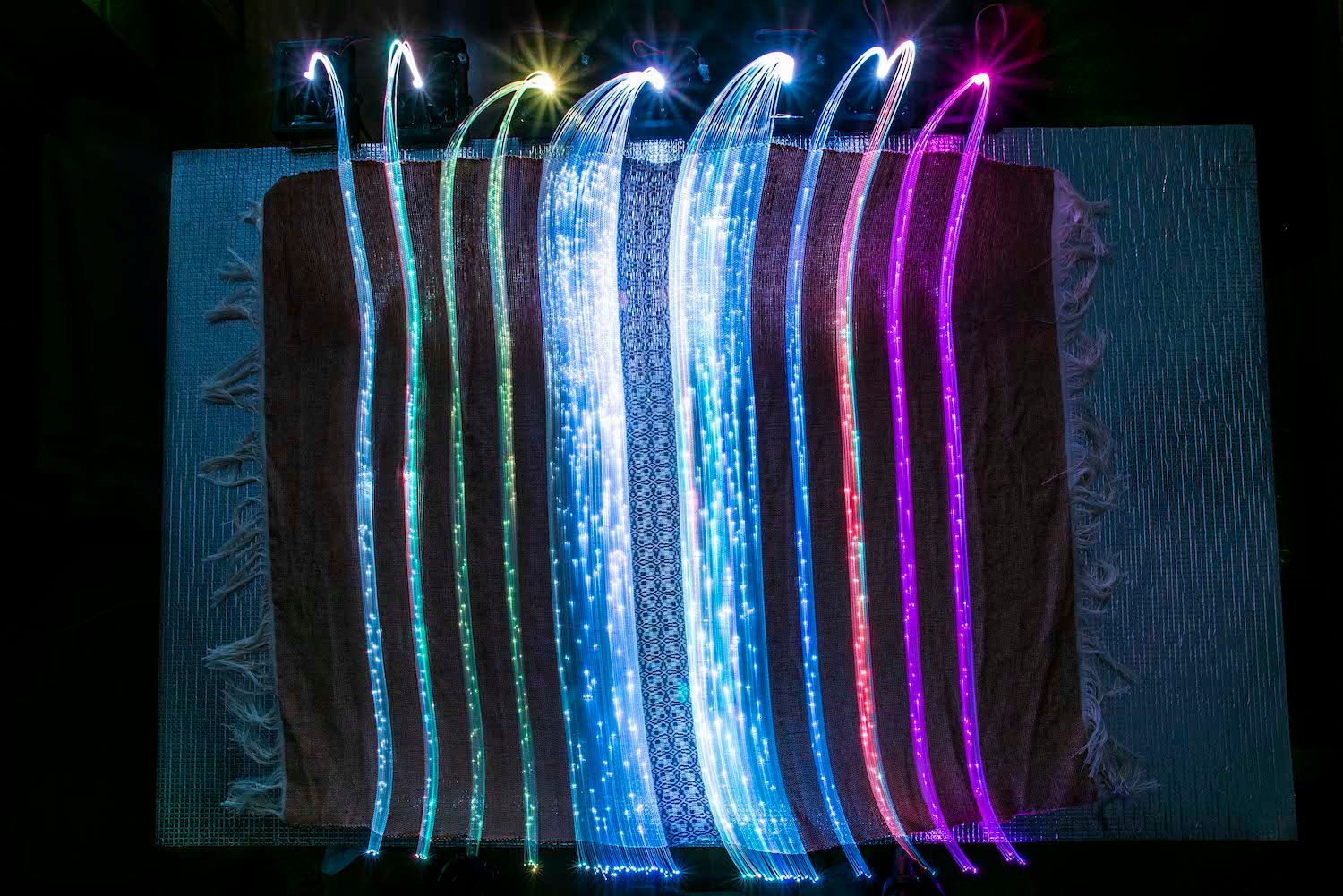Glowing strips of long avenues and skyscrapers of modern, buzzing metropolises draw traditional patterns by calling to life the technology of the future. Jeanette Szirmay’s interactive light textile, MetropoLight, is a unique interaction of man and machine in the spirit of long exposure. Interview!
You have been working on the MetropoLight project for a few years now. What was the path that led you the latest, recently released version?
MetropoLight connects people and the elements of the world of technique. Its an interactive light textile, changing its RGB color combinations as a result of motion. It was inspired by the night light of the skyscrapers and long avenues of metropolises, making a reference to long exposure as well as the works of two emblematic representatives of the Bauhaus school: László-Moholy Nagy’s work titled Light-space Modulator and the oeuvre of Annie Albers.
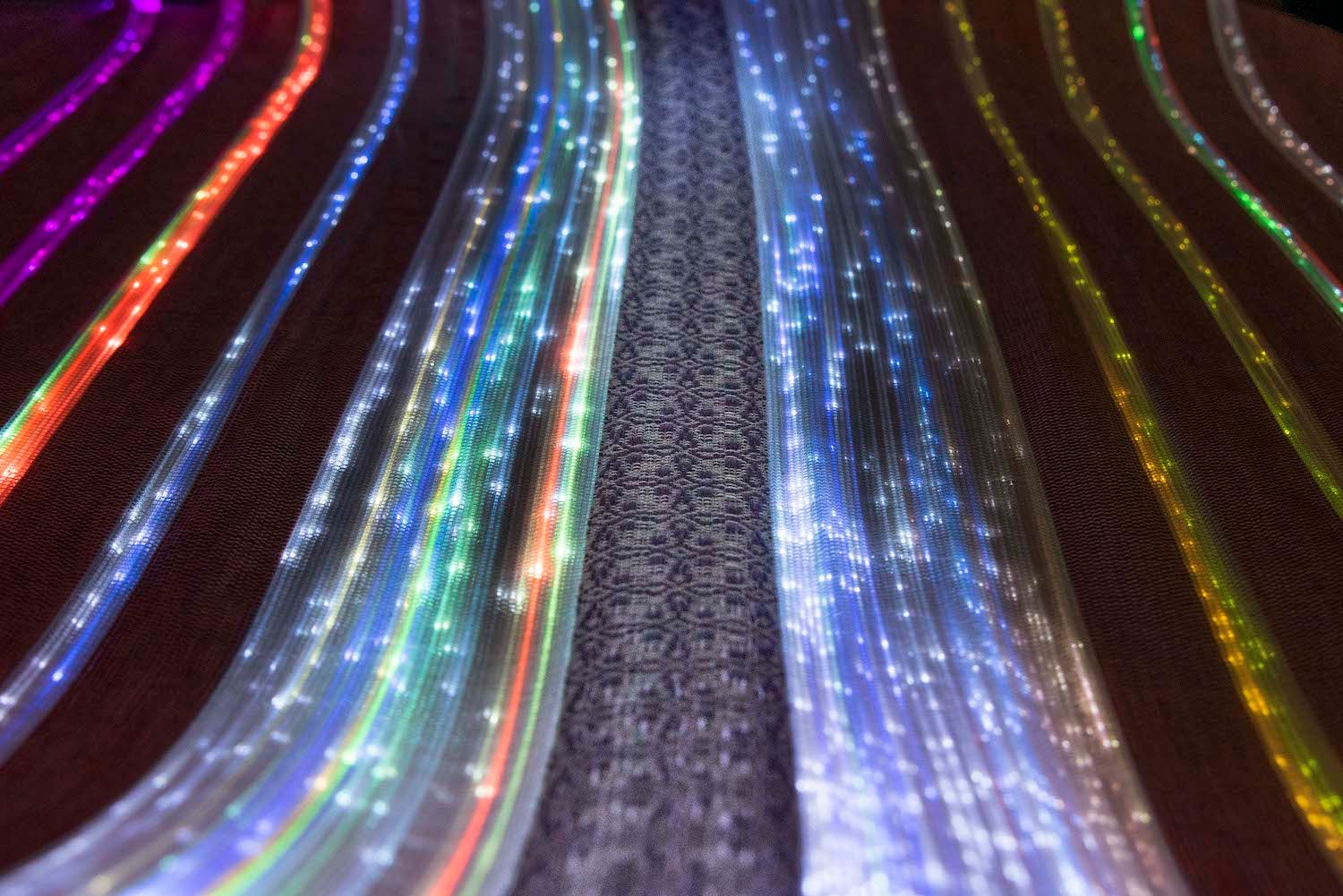
I have been developing the MetropoLight light textile since 2013 continuously. In the first versions, I tested various chemistry procedures. I used fluorescent and phosphorescent materials – the goal was to develop a sort of self-generating textile. A colorful photogram series was also made of the materials of the first light weaving, which reflects on the long exposure displayed by the structure of the textile. The installation series was also showcased in Ludwig Museum’s Bauhaus 100 exhibition in 2019. I was able to further develop the series in the framework of an art grant.
In the case of the latest MetropoLight, I used twisted yarn, combinations of thinner and thicker yarns as the basic materials of the weaving, mixed with optical fibers and cables. With the deliberate breaking of the optical fiber, light appears on the surface of the fabric as a graphic pattern. The character of the surface is given by the structure of weaving and the pattern of threads. I illuminated the end of the threads with RGB LED reflectors. The fabric is arranged in a symmetric manner, with a characteristic motif, a so-called weaver pattern in the middle – thus displaying traditions and the technology of the future at the same time, reinforcing one another in the light textile designed by me.
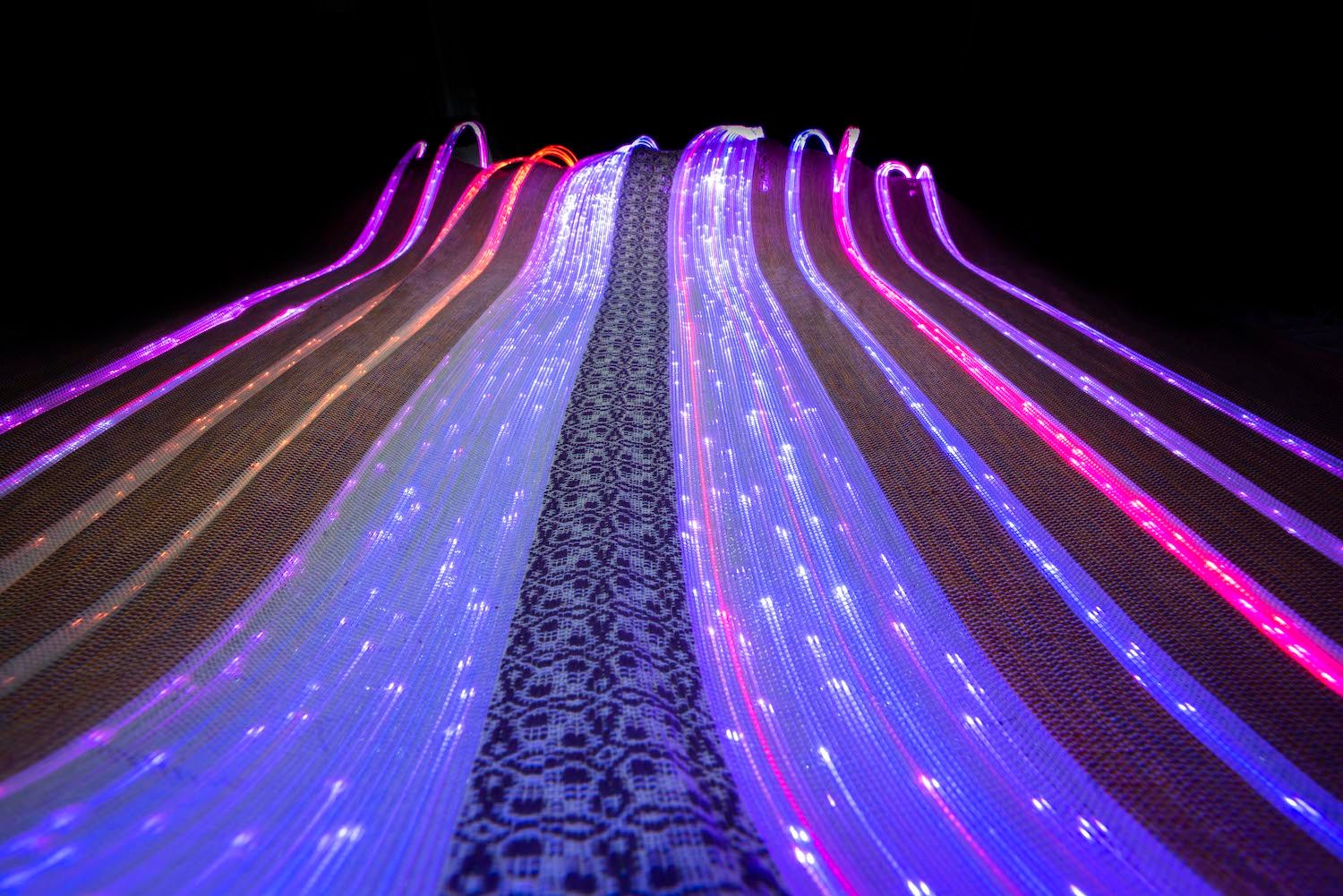
Your projects Sensory Yarn and Soundweaving are built on music and sounds, and both of them adapt a Hungarian tradition (a poem and embroidery). Keeping the traditional elements, MetropoLight takes a much more modern approach, and is related to movement. In addition to the works of Moholy and Annie Albers, what else inspired you to start this project?
In my design approach I usually place the emphasis on traditions and innovative materials. These, and the points of connection between them served as my main source of inspiration in the case of Soundweaving, Sensory Yarn and MetropoLight, too.
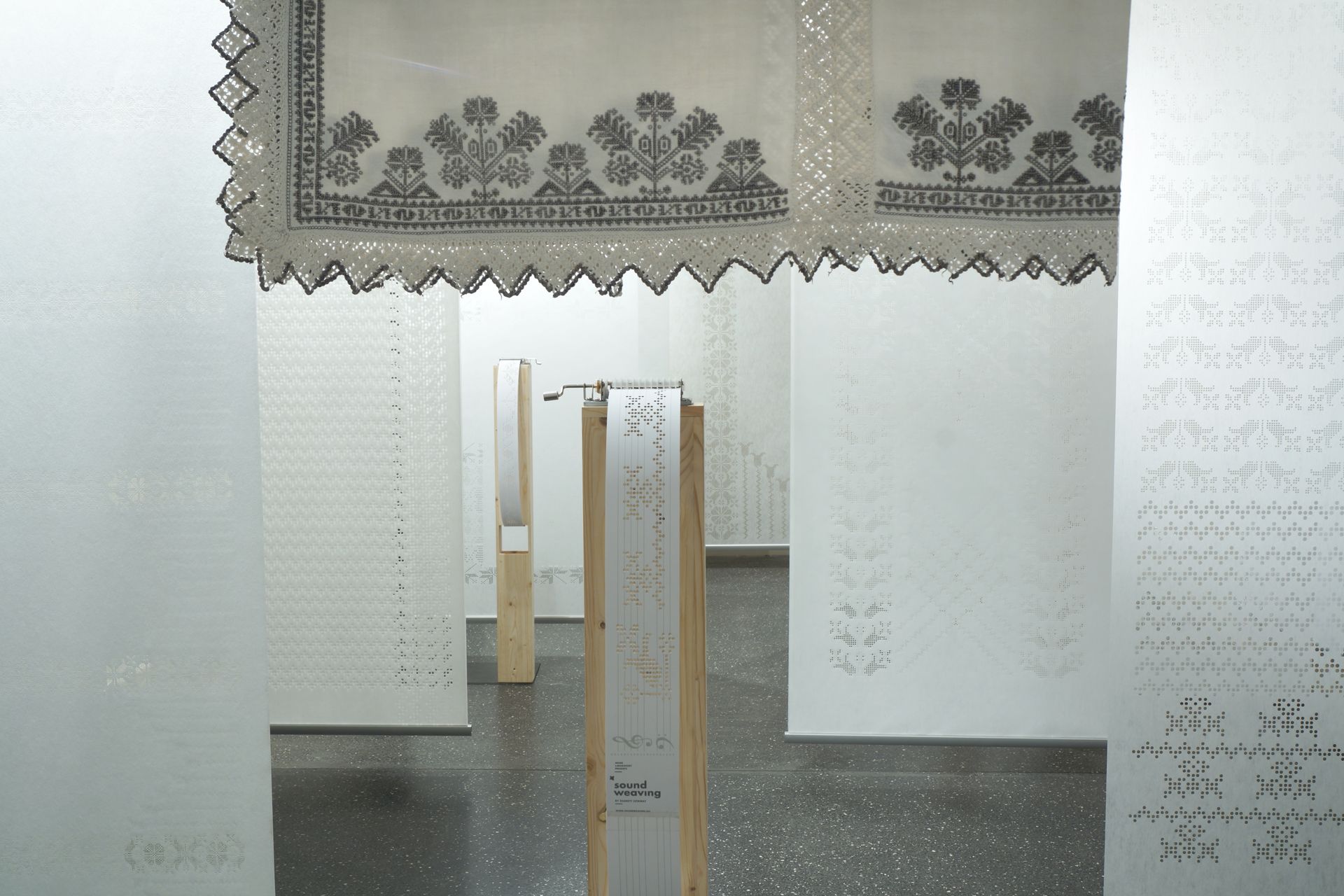
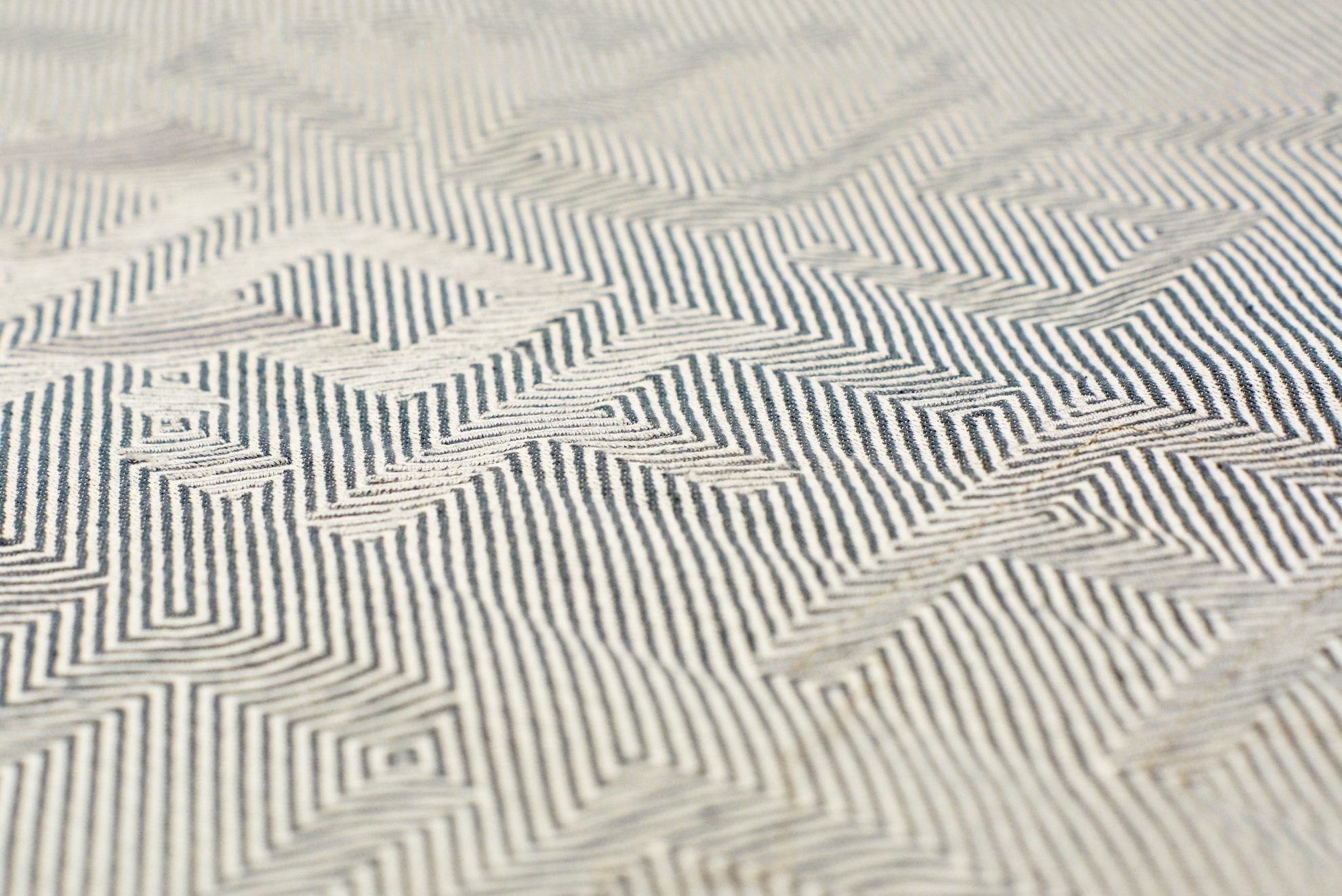
If I’m correct, Zoltán Mile was in charge of the technology and operation of MetropoLight. How did the work together go? How, with what technique did you manage to “put into operation” this special textile?
The optical fiber used in information technology as the carrier of information conveys a hidden meaning in the interaction of man and machine in this case. The textile starts operating when approached or when sensing motion, this starts the pre-planned process with the help of an external “generator” already in motion. Zoltán Mile contributed to the project in the development of the electrical engineering and electrotechnical part. The same as design in general, this task was also quite edifying for me, as I had to learn how to solder and I had to acquire the basic coupling techniques, too.
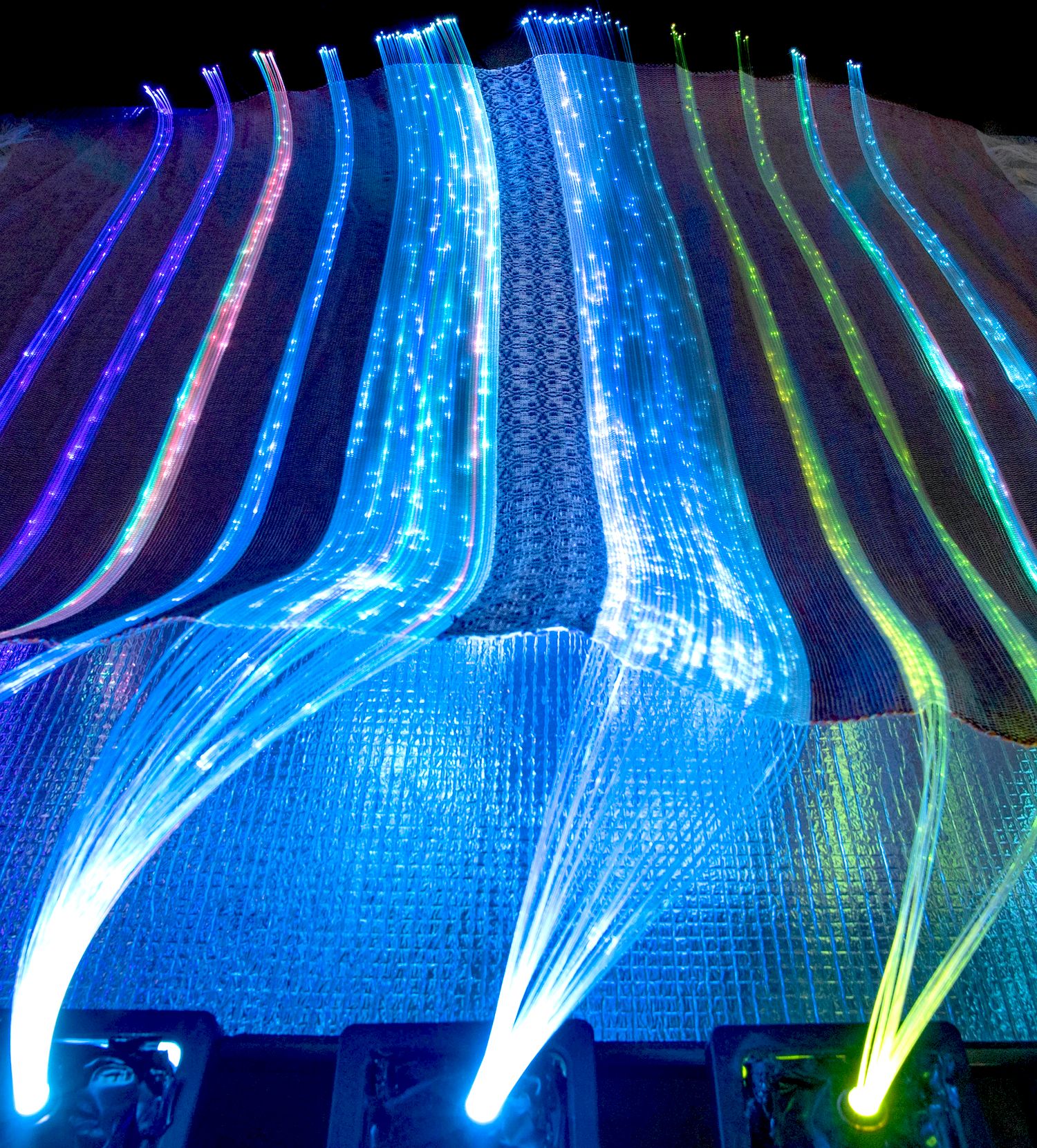
As part of the installation, in addition to the light textile, we also made a welded metal test table covered with mirror foil, where we placed the RGB LED reflectors illuminating the optical fibers. We also installed the motion sensor here, so it can sense motion in a 180 degree angle. Those entering the “field of vision” of the sensor will bring the pre-programmed installation surface into motion, which then will start the change of colors of the light textile. I think the combination of experimental sciences and technology opens new dimensions in textile art.
If we look to the future, on what areas do you think a textile like this can be utilized?
I primarily examine more open and free fields and trends of visual arts, and so I don’t necessarily aim for industrial development. I would like to implement the technological innovations in collaboration with larger companies, I already received inquiries for such tasks. I plan to showcase the new collection at next year’s Asian and European fashion weeks.
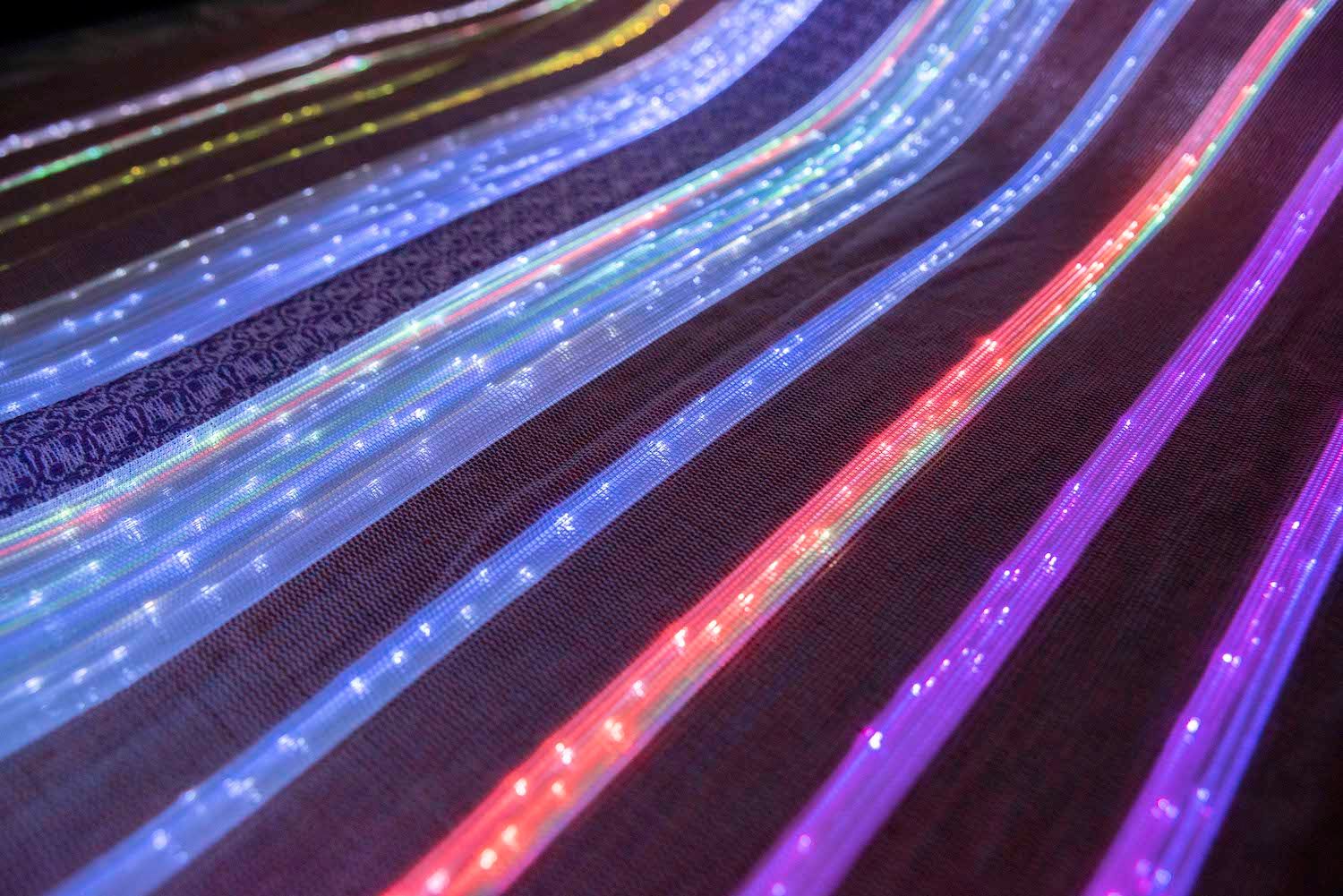
The MetropoLight combining the technology of the future and traditional weaving was made in the Szakrális Szövőműhely weaving workroom. How did they respond to such an extraordinary project? Can this multisensory interactive textile be made on a completely ordinary weaving loom?
I created the textile in a completely authentic environment. In the workroom, Brigitta Bicskei was very open towards my idea, for which I am extremely grateful. I have already mapped the potential difficulties previously, and I discussed them in advance, so the work went very smoothly.

Until now, all of your works have been quite popular and can also be found in the collections of international museums. It’s no wonder, since each and every project of yours showcase a brand new aspect of textile design. What are you working on at the moment? What are your plans for the future?
Soundweaving can be found in the collections of several international museums, including Pergamon Museum in Berlin, where it forms part of the permanent textile exhibition since 2018. Recently I also had a joint project with Victoria & Albert Museum in London, in the course of which I created a textile collection for the “Silk Treasures” exhibition held in Azerbaijan. In the future I would like to keep working with museums and galleries. I plan to continue designing installations and researching the materials of the future.
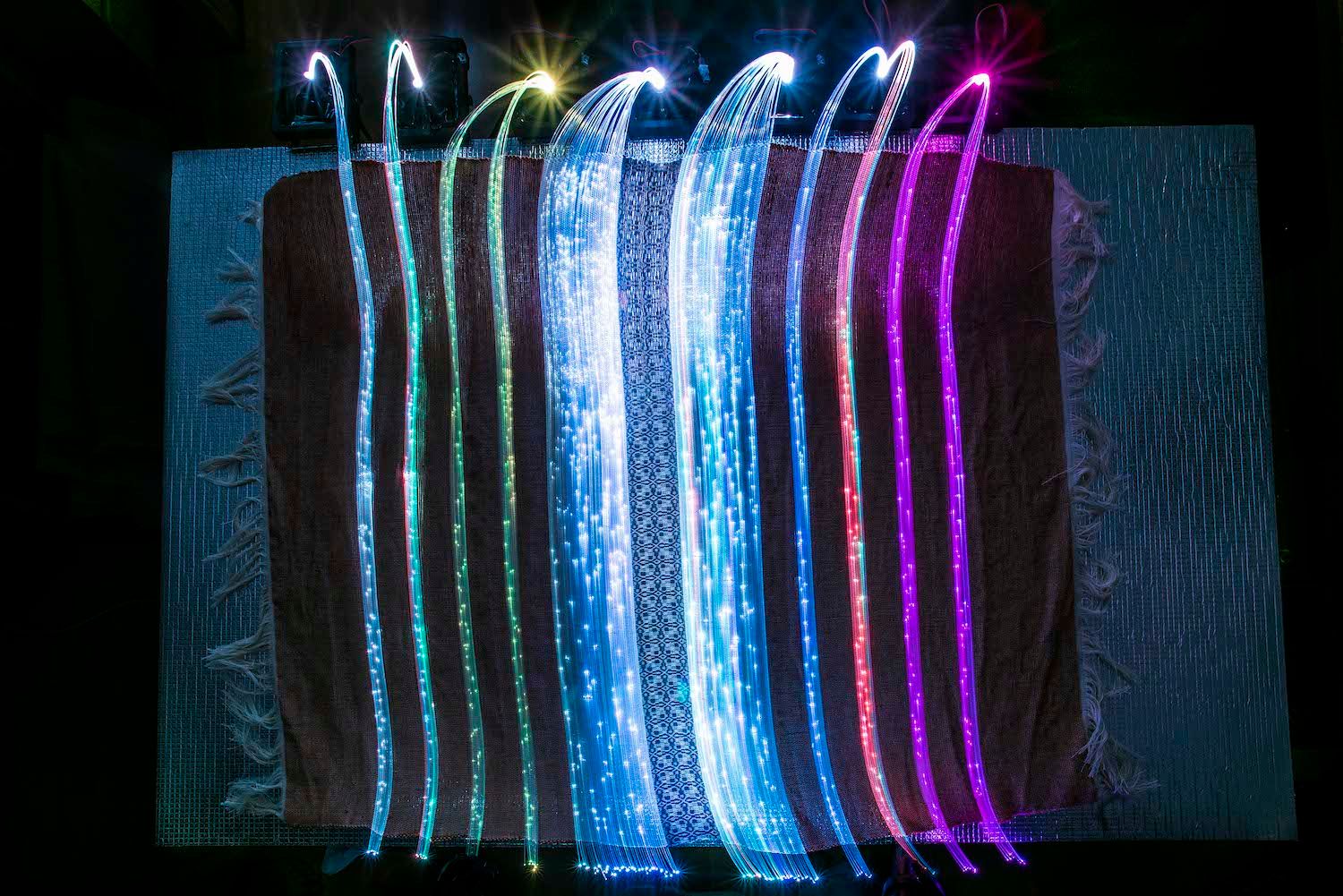
Szirmay Jeanette | Behance | Instagram
Photos: János Fejér
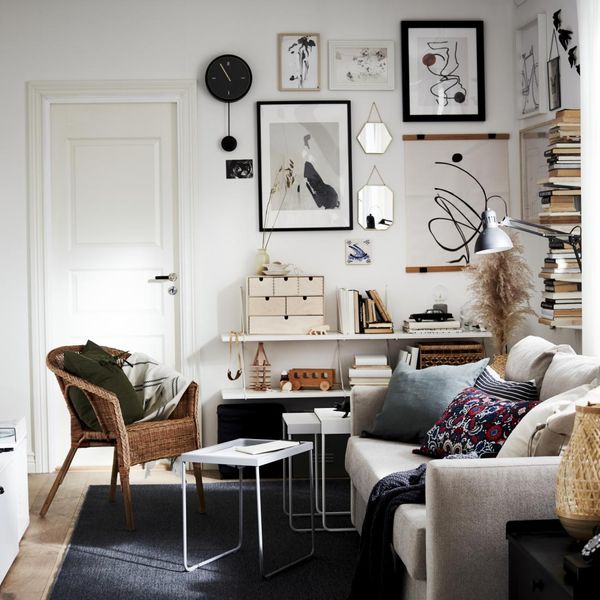
Reorganize your life! | IKEA

The end of single-use plastic packaging | LEGO










